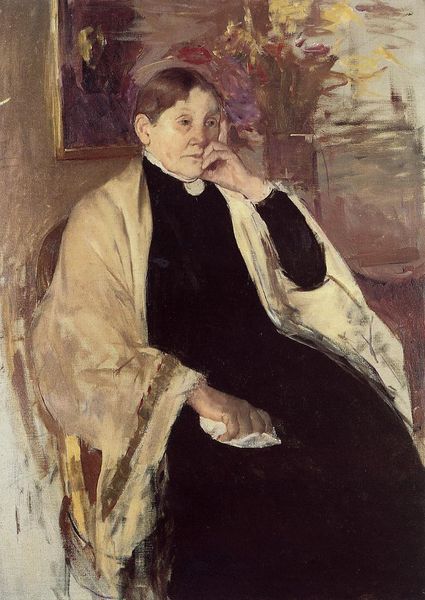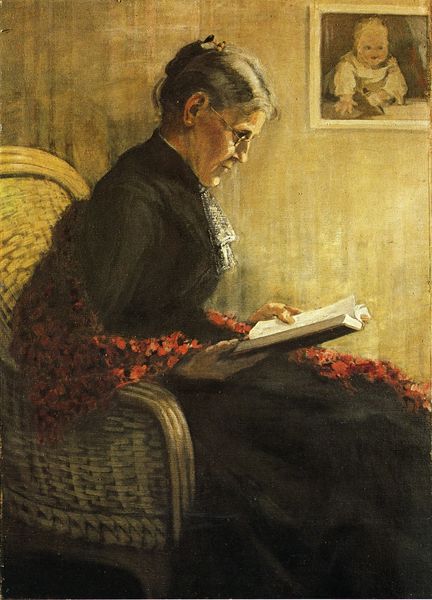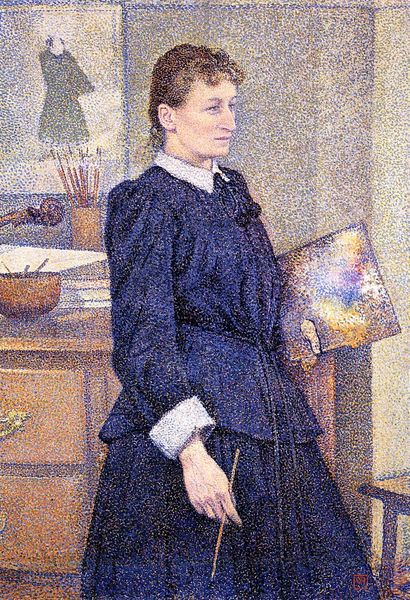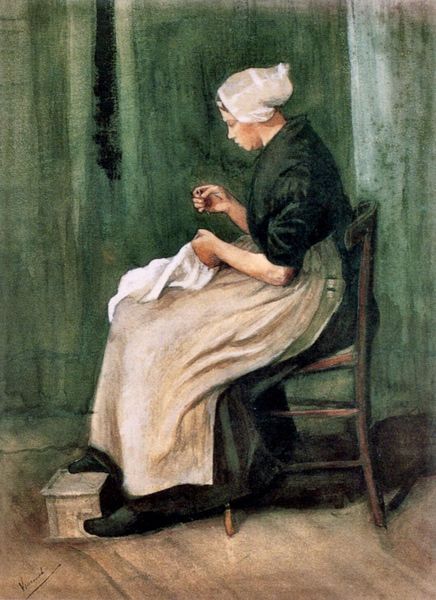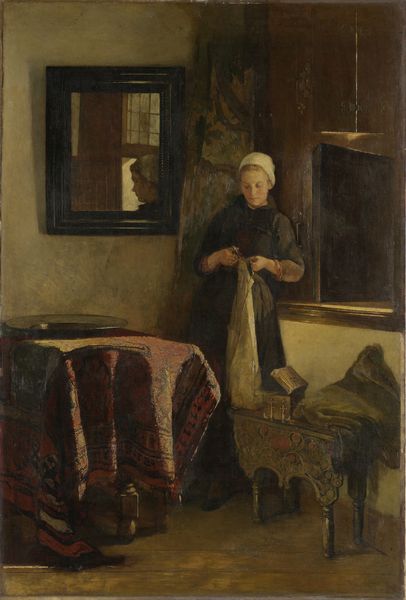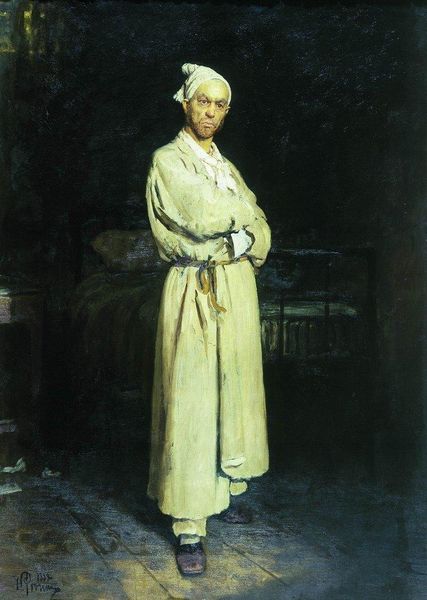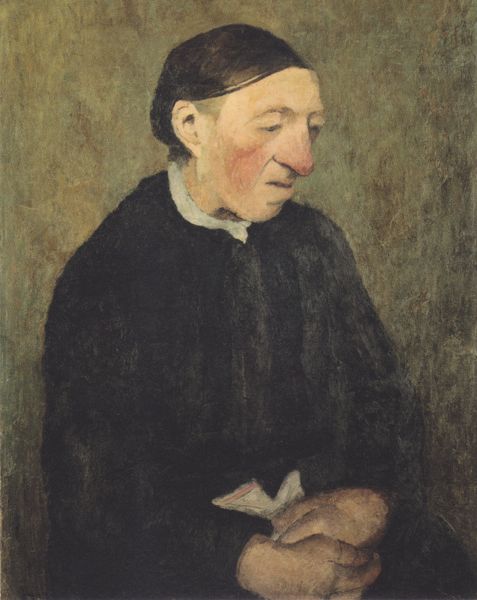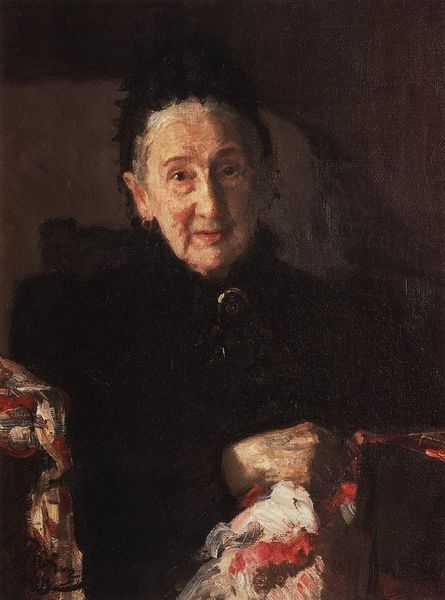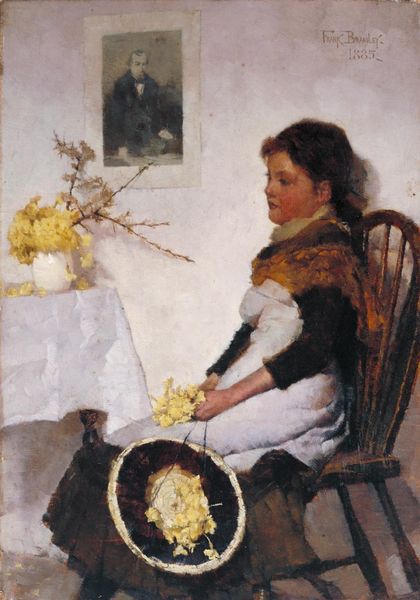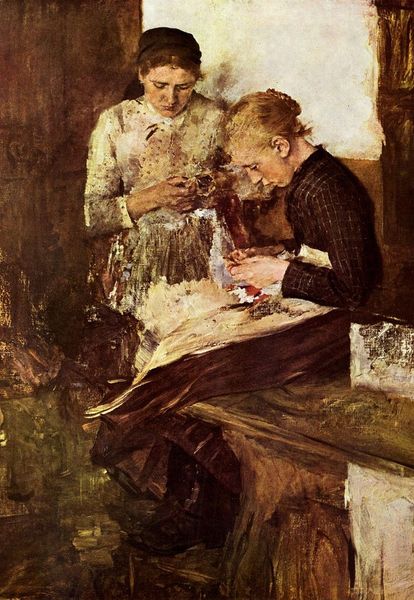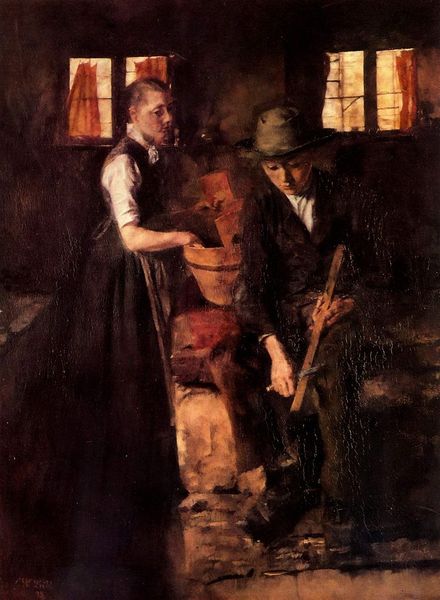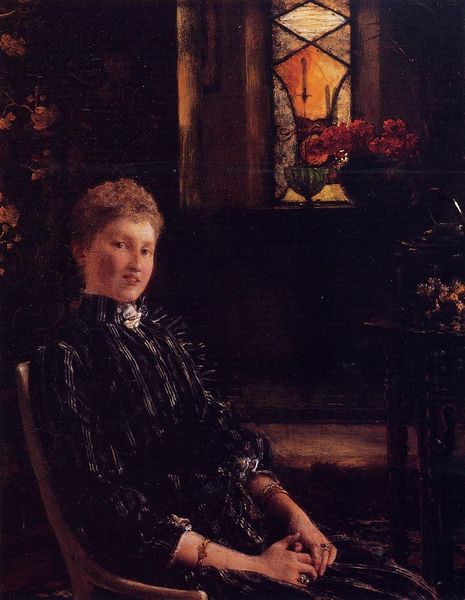
painting, oil-paint
#
portrait
#
painting
#
oil-paint
#
oil painting
#
genre-painting
#
modernism
#
realism
Copyright: Public domain
Editor: Here we have Wilhelm Leibl's "Die alte Pariserin," or "Old Parisian Woman," painted in 1870. The medium is oil on canvas. The subdued palette and the subject's somber expression create a rather melancholic atmosphere. What strikes you most about this portrait? Curator: The painting compels me to consider the position of women, particularly older women, in Parisian society following the Franco-Prussian War. Leibl, deeply influenced by Realism, presents this woman not as an idealized figure, but with an unflinching gaze. Do you notice how the museum exhibition might place it within the context of Leibl's contemporaries like Courbet and Millet? Editor: Yes, I see how it fits. It feels very different from the glamorous portraits of the French aristocracy at the time. It’s less about beauty and more about the realities of everyday life. Curator: Exactly. It raises questions about who is deemed worthy of representation, and the politics inherent in choosing to portray the working class. Consider the historical context – the rise of Realism coincides with social upheaval. Is Leibl making a statement by immortalizing this woman on canvas? Editor: It definitely feels like a deliberate choice. Her age, her simple clothing...it all speaks to a life outside the dominant narratives of the time. What do you think the inclusion of what looks like rosary beads, positioned on the table, adds? Curator: The beads introduce a potential narrative about faith and resilience in the face of hardship, which were popular ideas at the time. Also, by putting religious beads in the title "The old Parisian", could refer to the difficult relations the Church had with the Parisians, especially with women? It certainly complicates our reading, doesn't it? Editor: It does. I came in thinking it was simply a melancholic portrait, but now I see so much more complexity related to social commentary and historical context. Curator: Indeed. The museum displays become crucial in understanding these complex layers, revealing the intersection of art and socio-political realities.
Comments
No comments
Be the first to comment and join the conversation on the ultimate creative platform.
